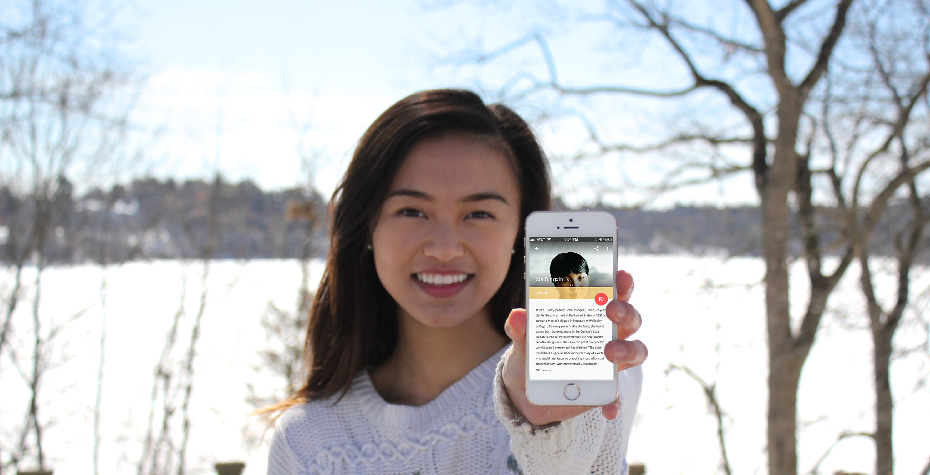Katy Ma '18 Chose Xie Bingxin (M.A. '26) and Lake Waban for a Google App That Showcases the Work of Influential Women in History

Take a walk around Lake Waban with Google’s Field Trip app active on your smartphone, and you might just discover a surprising fact about its connection to a famous Chinese writer. Xie Bingxin, who earned a master’s degree at Wellesley in 1926, found in Lake Waban’s waters a place of solace whenever she missed her hometown by the sea. The information in the Field Trip app is available thanks to efforts of the intergenerational feminist movement SPARK and student SPARK activists like Katy Ma '18. Ma’s work on the project was recently highlighted by CNN.
Whether in public monuments, Google Doodles, or even on paper currency, women are underrepresented in the national iconography of historical figures, which can give the impression that only men have made significant contributions to history. SPARK launched the project “Women on the Map” to redress this imbalance and highlight the accomplishments of women in the arts, sciences, and technology, as well as women who shaped social change.
Ma said she identifies strongly with the goal of “Women on the Map” to highlight women’s history — particularly the contributions that women of color have made to society. “As an Asian American woman, I thought it was very problematic that I couldn't recall learning about anyone like me in any of my high school history courses,” she said.
Bingxin, the pen name of Xie Wanying, was one of the most prominent literary figures in twentieth-century China. One of her essays, which references Lake Waban, is still required reading for schoolchildren. She was at the forefront of the Chinese literary revolution of the early 1900s in using vernacular rather than classical language in her works, which span from poems and essays to novels and children’s literature.
The Bing Xin Literature Museum in Fujian Province makes Bingxin the only known Wellesley alumna to have an entire museum dedicated to her work. A group of Wellesley professors visited the museum in 2009. Ma first learned about Bingxin’s story through a Wellesley magazine article covering the trip, which lead to the digital tribute on the app.
For the initiative, SPARK activists like Ma researched over a hundred scientists, intellectuals, activists, and other women pioneers around the world and wrote profiles about their accomplishments. The organization has partnered with Google’s Niantic Labs to include these profiles on Field Trip, a geolocation app designed to reveal interesting and relatively unknown stories about local spots.
When users switch on “history notifications” on Field Trip, information about these women appears in a pop-up alert when the user approaches a location that played a significant role in one of these women’s lives. A writer for TIME magazine wrote that it’s “like getting a text from the great women of the past.” (TIME included a video about the project in their article, you can see Ma talk about her work starting at the 50 second mark).
Ma has worked as a SPARK activist since her senior year of high school. She learned about the organization in a New York Times article, which detailed their successful campaign to persuade Seventeen magazine to stop Photoshopping girls’ bodies.
“Before that, I had never heard of an organization that empowered girls to be media activists, that was truly by girls and for girls,” she said. “I wanted to deepen my understanding of feminism through an intersectional lens and learn how to critique the problematic forms of media that I witnessed every day.”
So far, 119 women in 28 countries are represented on the Field Trip app. SPARK is relying on crowdsourcing to shed light on more inspiring women. Learn how to contribute information to the project on the SPARK website.
- Story by Nicole Tai '15
